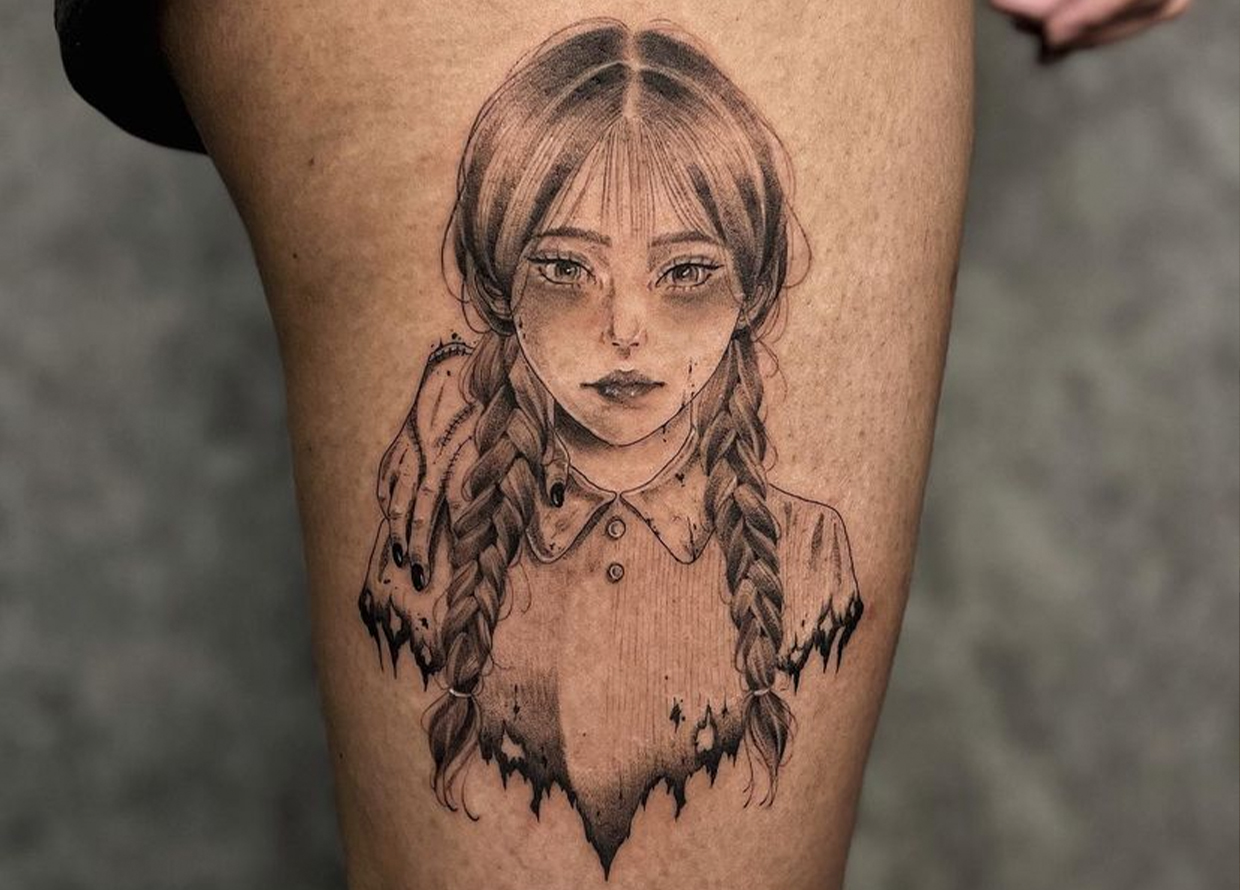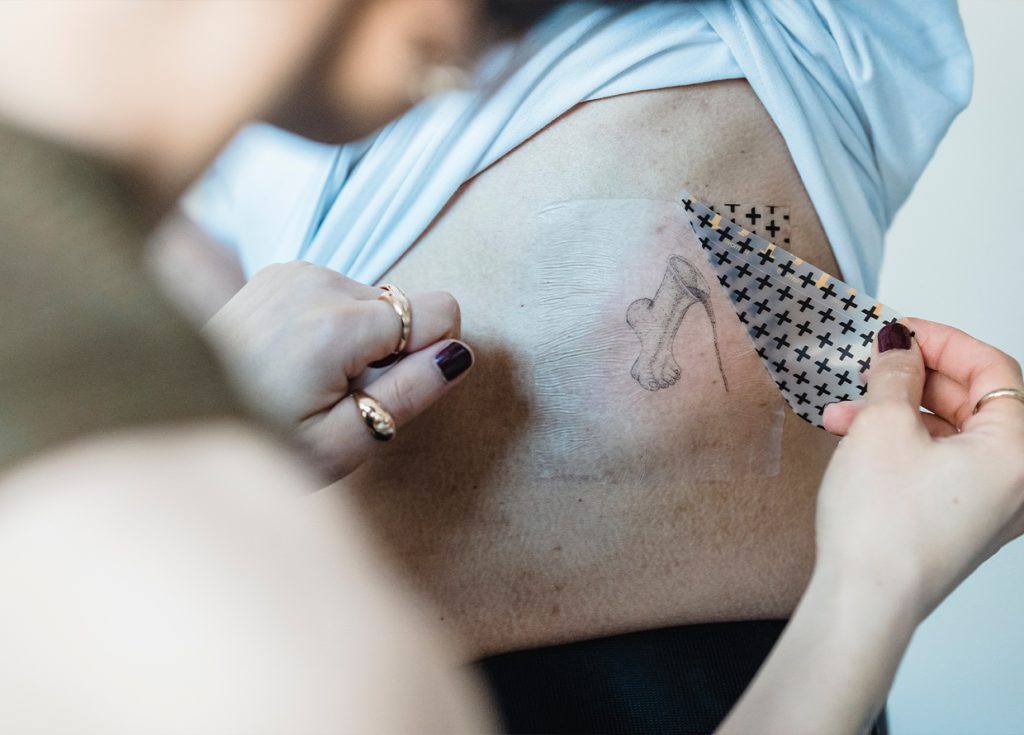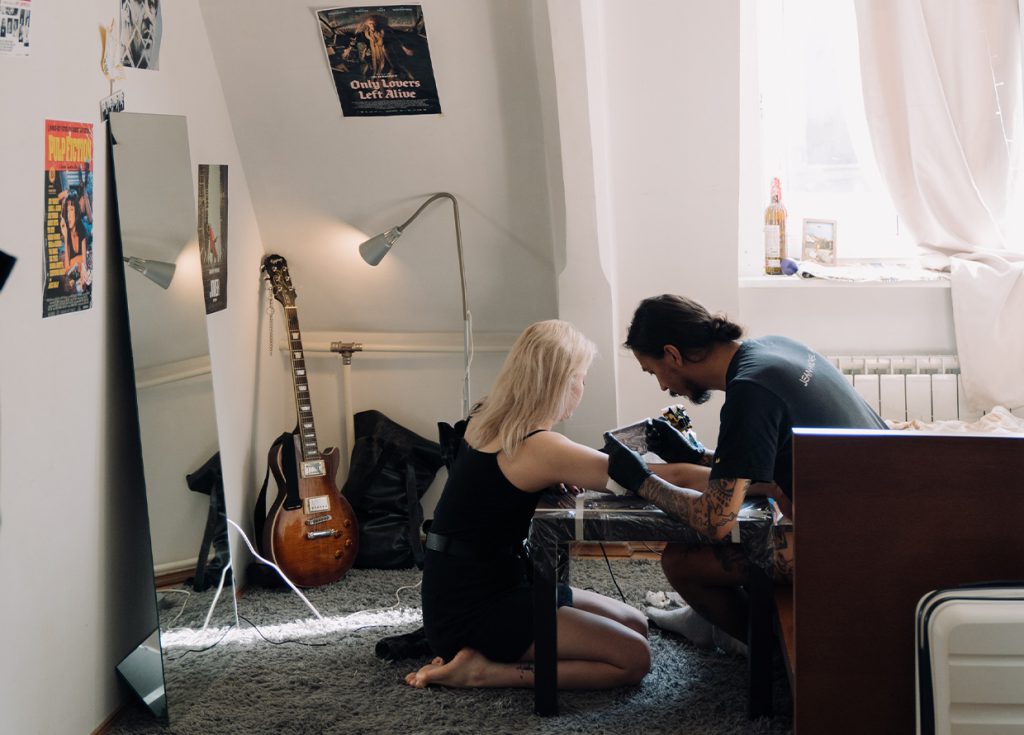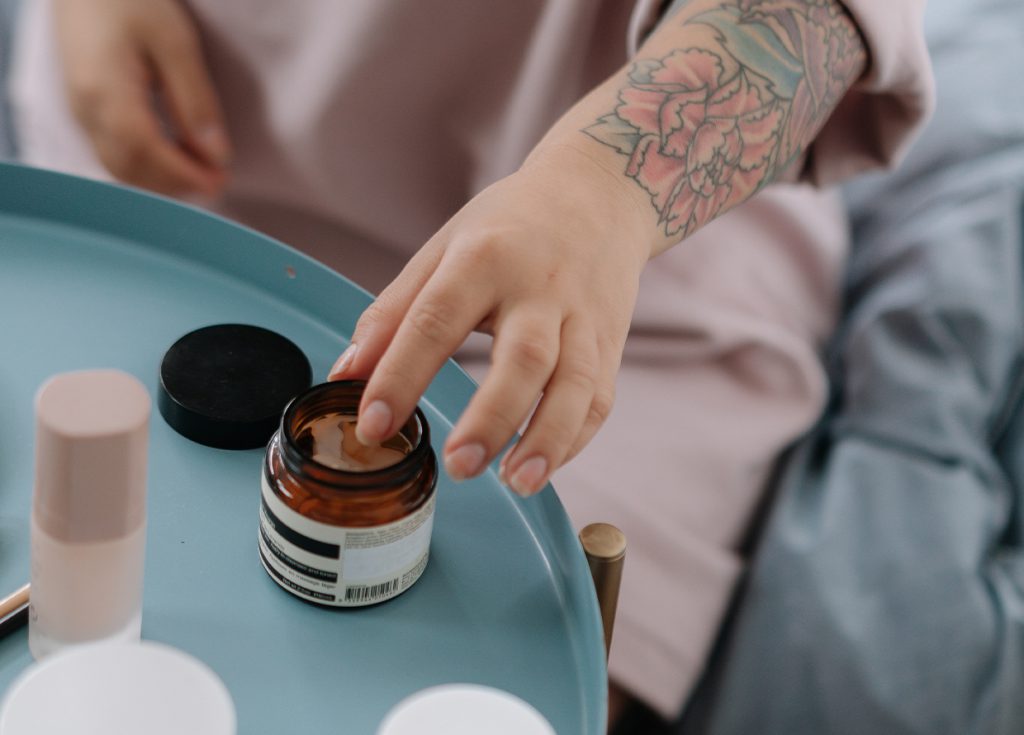Tattoo 101: All you need to know about aftercare
Getting cooler one poke at a time

Finally got your first poke? Here’s everything you need to do to keep it looking good as new for ages.
The importance of tattoo aftercare is undermined way too often than it should. It’s an intricate procedure that should be attentively kept up with over the course of weeks to months, but it’s easy to turn a blind eye to the consequences when you’re filled with excitement, thinking “What could possibly happen?” (famous last words). Well, a lot.
READ: Beauty Chats: Everything you need to know before getting inked, according to the pros
View this post on Instagram
Fresh tattoos are fresh wounds—or yassified wounds, if you will. And you should treat it like such. Beyond damaging the artwork, infections are a spine-chilling nightmare that absolutely no one wants to experience. One minute you’re going about your day with no care in the world, and next thing you know, you’re witnessing a ghastly crime scene on your body progressively worsen as you realise you’ve just paid a wad of cash for an infection. Yikes.
But none of that should distress you if you simply do as your artist instructs and keep your new ink in good shape while it’s healing. Besides, aftercare is fairly simple and only requires minimal effort with products that you likely already have at home—so there’s no excuse to be lazy! Ahead, we’ll guide you through everything you need to do and expect post-tattoo, along with professional advice from a very talented artist, Noah Chen.
How long does it take for a tattoo to heal?
View this post on Instagram
Generally speaking, the healing process takes roughly around two weeks to a month—though, it varies depending on a few factors. “It’s hard to tell as it really depends on the tattoo, skin type, and how you take care of it,” Chen explained.
Keep in mind that while it may seem as if it’s fully healed within the first few weeks, in some cases, it can even take as long as six months for the flesh below the skin to properly recover—so be sure to consistently keep up with the aftercare until you’re absolutely certain that it’s completely healed below the surface. If it hasn’t made any progress within a month, then you might have a problem on your hands. It’s always recommended that you ask your artist for details, as they can provide you with a much more accurate answer.
When do I remove the bandage?

As much as you’d like to rip off the bandage as soon as you step out of the studio, don’t. In the tattoo world, the clear bandage is referred to as a ‘second skin’—and that’s exactly what it acts as. Specifically designed for tattoos, the second skin is a medical-grade bandage made of polyurethane acrylic adhesive. It’s flexible, waterproof, and most importantly, protects your fresh ink from bacteria and friction. According to Chen, “you should keep it on for three to four days. Some tattoo artists use plastic wrap instead, which you should only keep on for 20 minutes.”
What to expect

Swelling and mild bleeding
If you notice blood or clear fluid (blood plasma) oozing out of your tattoo in the first few days, don’t fret—it’s totally normal. After all, your skin did just get rapidly punctured by needles for hours. That said, you should also expect some swelling, redness and itching post-tattoo, especially if you’ve gotten inked on a sensitive area of your body—particularly in places that are close to your bones, with many nerve endings, or where the layer of your skin is thin, such as your elbows and kneecaps.
Peeling
Of course, like all wounds, bleeding will be followed by scabbing. During this stage, do not—and I mean Do Not—pick or scratch the area, although I know how tempting it can be. It will be itchy and unsightly, but rest assured, it will pass. Picking at your scabs could result in damaging the tattoo and removing bits of ink, so allow them to fall off naturally.
Colour change
View this post on Instagram
Once it’s fully healed, your tattoo will not look the way it did when it was freshly done. Over time, the ink may appear duller and a little faded, especially with coloured tattoos. But that doesn’t necessarily mean that your artist did a bad job, it’s most likely due to skin build-up. In this case, gently exfoliate the area and its pigment will eventually come back to the surface. Other causes that are irreversible include poor aftercare, too much sun exposure, and excessive friction—all of which can be avoided with proper aftercare, but we’ll get more into it ahead.
Aftercare

Do:
- Clean your tattoo daily
It goes without saying that keeping your tattoo clean is the most important part of the aftercare. No one wants to sit through hours of getting inked just for it to get a nasty infection that would just ruin the artwork entirely—not to mention, tattoos are not cheap (and if it is, do not book that appointment).
You should be able to purchase cleaning products at the parlour that are specifically meant for tattoos. Alternatively, you can also use whatever you have at home as long as it’s a fragrance-free gentle cleanser. After the second skin has been removed (with the approval of your artist), Chen instructed, “Wash the tattooed area thoroughly with anti-bacterial soap and water—don’t rub it, just let the water run through.” Do this twice a day with mildly warm water, then lightly dab your skin dry with a clean soft cloth. Next, you should…
- Keep it moisturised
To ensure that the healing process goes as smoothly as possible, moisturising is key. Keeping the area hydrated prevents burning itches that are impossible to resist scratching, peeling and cracking issues that will ruin the design, and some serious scabbing which can obstruct the healing process. But don’t over-moisturise! With clean hands, gently apply a thin layer of fragrance-free ointment or lotion over the area—do this at least two to three times a day for three to four weeks. The safest and most recommended product to use is Aquaphor, although any moisturiser is fine so long as it’s tattoo-friendly.
- Let your tattoo breathe
View this post on Instagram
Tattoos need to breathe in order to heal, so leave yours completely uncovered if you can. If not, wear loose-fitted clothes made with soft materials such as cotton, and avoid any harsh fabrics like denim which can rub against your skin and cause excessive friction.
- Wear sunscreen
Applying sunscreen plays a huge role in how your tattoo will turn out—even long after it’s fully healed. Slight colour fading is normal, but excessive exposure to UV rays will damage collagen and accelerate the fading process significantly.
READ: Sunscreen 101: Your guide to all things SPF (and PA++++)
Don’t:
- Pick or scratch the area
I’ve already mentioned this above, but I’d like to further emphasise (again) that you should never pick, scratch, slap, rub, or peel your tattoo—not even through your clothes. Applying moisturiser will help soothe the itch, but if that’s still not enough, your best and only option left is to keep yourself distracted as hard as possible.
- Swim
Until your new poke is fully healed, avoid swimming at all costs. Both chlorine and salt water will not only put you at risk of infection, but also leach the ink, making your tattoo a lot less vibrant.
- Intense activities
After getting a new tattoo, it’s recommended that you refrain from doing any intense exercises for at least one to two weeks. Sweating may lead to an infection, and stretching the area will delay the healing process.
- Consume alcohol or seafood
What you consume before and after your appointment will also affect your tattoo, particularly with seafood and alcohol. Vibrio vulnificus—a nasty, life-threatening bacteria found in seafood—can cause severe wound infections and gastroenteritis, while alcohol dilutes your blood, resulting in excessive bleeding which prevents ink from settling in your skin properly. Alcohol and tattoos are known enemies, so whatever party you have planned will just have to wait! “Avoid for at least four days, but every artist will have different advice,” Chen explained. All things considered, consult with your artist before you indulge in anything that may affect your new ink.
Signs your tattoo may be infected

Despite being a rare occurrence, tattoo infections are still a possible outcome that you should never disregard. Wasting your money and destroying the artwork will be the least of your worries when you’re sitting in the emergency room in pain, and your skin’s looking as if you’ve been attacked by a flesh-eating zombie. The worst-case scenario can be avoided if you tackle the infection as soon as possible, so here are some signs to look out for:
- Abnormal redness and swelling that doesn’t go away
- Leaking foul-smelling pus
- Fever
- Chills and shivers
- Soreness getting progressively worse
- Rashes or hives
- Severe itching
Fever, chills, and oozing fluid two days post-tattoo are the most apparent indications of an infection, so if you experience any of these complications, seek professional medical assistance immediately. Moderate soreness, itching, swelling and redness are normal, and it should subside within a week or two. If you’re unsure, consult with your artist to verify.
Love Chen’s work? It’s hard not to! To book an appointment, text her at +60 11-5753 3877.
For more reads like this, click here.
| SHARE THE STORY | |
| Explore More |



